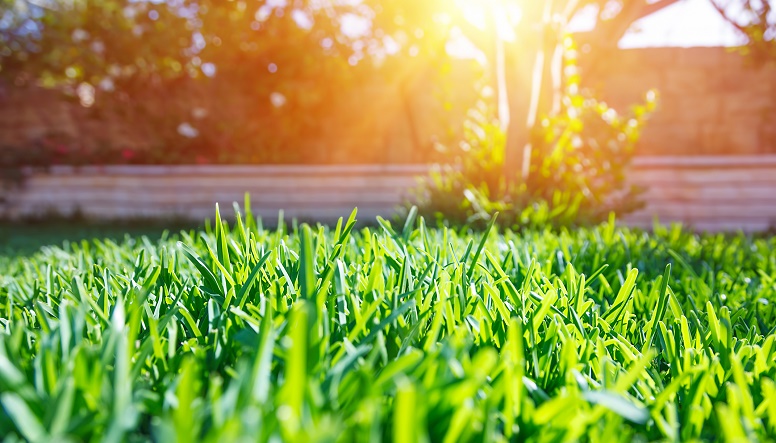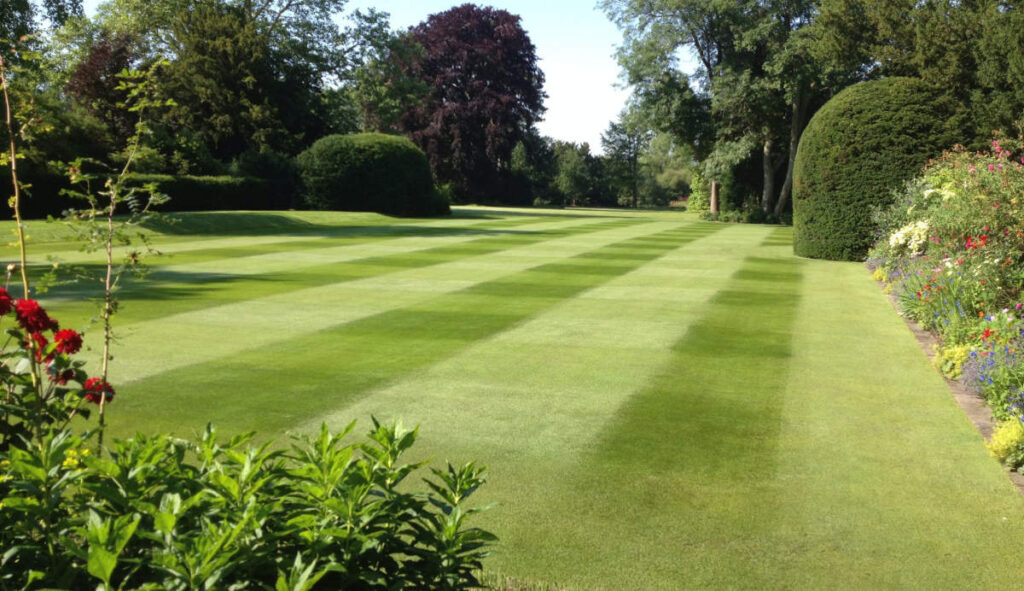Every homeowner wants green, lush grass that’s the envy of their neighbors. But achieving a perfect lawn takes time, patience, and a devotion to taking care of the details, like applying the right fertilizers and watering at the right time. In fact, even lawn care professionals spend years perfecting their skills.
In your quest for a gorgeous lawn, you might have encountered advice that isn’t effective, or even detrimental to the grass. If you have heard any of these myths, or if you’re doing any of these things, they aren’t doing your lawn any good.
Don’t Believe These Things About Your Lawn
1. Brown Grass is Dead Grass
Nothing is more frustrating than putting work into your lawn, only to have it turn brown. If your lawn is brown, though, it doesn’t necessarily mean the grass is dead. Most grass will go dormant at some point during the year. In colder climates, this is during the winter. In warm areas, the grass may go dormant during the height of summer. Dormancy allows the grass to direct all nutrients to the roots so it stays alive. Dormant grass will turn green again once it’s under less stress, i.e., the weather warms up or it receives more water.

Grass is typically dormant if it’s uniformly brown and responds to warmth and extra water. If the grass doesn’t respond to more water, or you have brown patches among green areas, then it may be dead or have a different problem.
2. Beer Makes a Great Fertilizer
You may have heard that pouring beer on your lawn will help feed it. The idea is the yeast in the beer will feed the grass, helping it grow. Unfortunately, if you’re pouring beer on your lawn, not only are you wasting beer, but you’re also hindering its growth. In addition to yeast, beer contains sugar and alcohol, which can harm the roots. Not only that, the yeast in beer supports fungus growth, which is never good for the grass. Instead, stick to actual fertilizers, which provide a full range of nutrition to the grass, not just yeast.
3. Grass Should Be Kept Short
You might be tempted to set your mower blades lower to cut the grass short, but while you might be giving yourself an extra day or two between mowing, you’re not doing the grass any favors. Ideally, only about one-third of the blade should be removed when you mow. Cutting it any lower creates a host of issues. When the grass is too short, it allows sunlight and water to reach any weeds that may be germinating in between blades, giving them a chance to grow. Grass that’s too short is also more at risk of burning and developing a shallow root system. Aim to keep the grass at about three inches, putting off mowing if you need to.
4. Grass Seed Should Be Planted in Spring
When spring arrives, you’re likely eager to get outside and get going on your grass — and that includes re-seeding thin or bare spots. While it makes sense on the surface, since you’re planting everything else right now, spring isn’t actually the best time to plant grass seed.
For starters, when you start grass in the spring, it doesn’t have time to develop a healthy root system before the heat of summer. This delicate new grass is more vulnerable to heat and drought than the more established blades. As weeds spread throughout the summer, they are more likely to choke out the new grass, and you don’t have as many options for weed control. In fact, if you want to apply pre-emergent weed control in the spring, it doesn’t make sense to also plant seeds, since new plants will not grow.

It’s better, then to plant new grass seed in the fall, when you don’t need to deal with weeds or weed control as much. The new grass will have time to get established before going dormant for the winter and will emerge healthy and strong in the spring.
5. Lawn Care and Irrigation Systems Aren’t Worthwhile
Sometimes, your lawn needs more help than you can provide. Lawn care and maintenance services are experts in keeping grass healthy and green and can identify problems that you might not recognize or know how to solve. They also have professional-grade equipment and solutions that may be more effective than what you can purchase at the home improvement store.
Investing in an irrigation system is also worthwhile if you’re committed to a beautiful lawn. Watering with hoses and sprinklers, or relying on rain, will ensure your grass gets some hydration, but sprinklers provide the consistency grass needs. Grass requires deep, infrequent watering, which isn’t always easy to achieve by hand. Irrigation solves this issue, giving you the lawn you want without the hassles.






